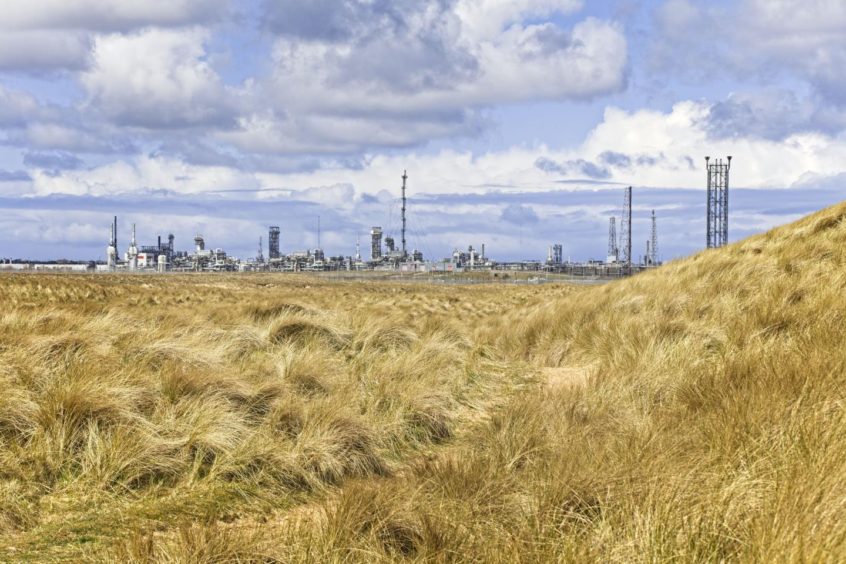
Plans to develop a large-scale facility in the north-east, capable of removing carbon from the atmosphere, have taken a step forward.
UK firm Storegga has commenced work to engineer and design a direct air capture (DAC) facility, alongside Canadian company Carbon Engineering (CE).
If built, it would be capable of permanently removing between 500,000 and one million tonnes of carbon dioxide from the atmosphere a year.
The proposed facility could become operational as soon as 2026 and would be the first of its kind in Europe.
Storegga said a shortlist of potential sites in the north-east has been drawn up, with a final decision expected in the coming weeks.
Once complete, the facility will be a “model” for the future deployment of DAC “across the continent”, creating “thousands of local jobs and businesses”.
It’s claimed the project would put the north-east at the “forefront” of the net zero technology drive.
Following a successful feasibility study in the first half of 2021, Storegga and CE have commenced preliminary engineering and design of the proposed facility.
The study will aim to flesh determine the costs and economic modelling associated with the planned DAC plant.
It’s expected the project will be completed at the beginning of next year, with detailed engineering designs expected to follow later in 2022.
Scotland offers numerous advantages for the deployment of DAC, including abundant renewable energy sources, existing infrastructure and a skilled workforce, Storegga said.
There are also “significant” offshore storage sites that could be used to safely house carbon dioxide.
Nick Cooper, CEO of Storegga, said: “We are pleased to announce the beginning of the Pre-FEED study for our proposed large-scale DAC facility in north-east Scotland.
“This announcement follows our recent funding from the UK Government’s Department for Business, Energy and Industrial Strategy under the Direct Air Capture and Greenhouse Gas Removal Technology Innovation Programme Award.
“DAC technology is critical to remove large quantities of CO2 from the atmosphere in order to meet our climate goals.
“The development of a DAC facility in the UK will put our country on the map as being at the forefront of net negative technologies and the technology will enable hard to abate sectors to create plans to reach net zero emissions.”
Earlier this year, Storegga and CE’s Dreamcatcher project bagged almost £250,000 in UK Government funding.
Undertaken with input from Petrofac, the study is looking at powering the DAC facility using clean energy, rather than natural gas.
Storegga’s involvement in Dreamcatcher is through its subsidiary, Pale Blue Dot Energy, of Banchory, which is also the lead on the Acorn carbon capture and storage project.
Based at the St Fergus gas plant near Peterhead, Acorn is exploring storing carbon emissions under the North Sea using oil and gas infrastructure.
It is currently in the detailed engineering and design phase of development, with a final investment decision expected early next year.
When combined with geological storage, DAC technology is able to reverse the emissions process, providing a method for decarbonising hard to abate sectors, like aviation and shipping.
As such, locations being considered by the partnership for the facility are “in proximity” to Acorn.
Steve Oldham, CEO of CE, said: “In recent years we’ve observed a growing recognition of the need for large-scale removal of carbon dioxide from the atmosphere.
“At Carbon Engineering, we’ve spent the last decade optimising a highly scalable and affordable solution for removing carbon from the air and now our focus is on global deployment to help meet the climate challenge.
“Our first one megaton DAC facility is underway in the US, and we’re thrilled to be working with Storegga to develop a large-scale facility in the UK – the first of its kind and size in Europe.
“These facilities will demonstrate that large-scale DAC technology is a feasible, affordable and available tool that is ready to help bring global emissions down to net zero, and eventually net negative.”
